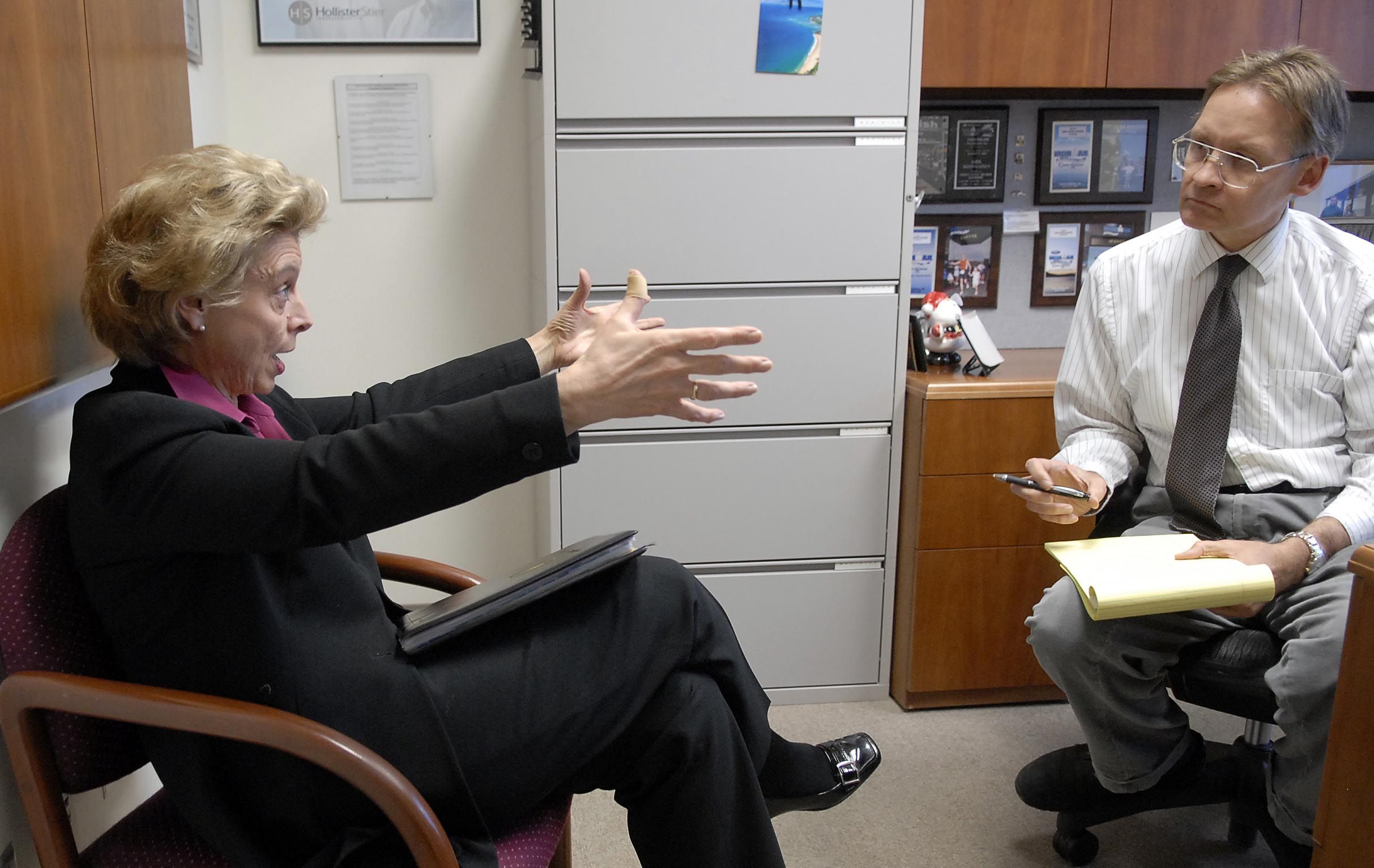Revenue outlook a little worse; Budget reserve outlook even more so
OLYMPIA – The state’s most likely revenue outlook for the next two years dropped slightly Wednesday as the state’s chief economist revised his projections down about $183 million because of what he calls a “soft patch” in the recovery.
The state should collect $31.603 billion in its general fund to spend on a wide array of programs, services and salaries, Arun Raha said, or about sixth-tenths of 1 percent less than the revenue projected in March...
To read the rest of this item, or to comment, click here to go inside the blog.
...and about $2 billion more than it will collect in the two-year budget cycle that ends June 30.
The operating budget reserves went down more, by about $563 million, as state officials tried to adjust the biennial spending plan for those Raha’s projections, as well as transfers to or from various accounts and the effects of a tax amnesty program that has some tax deadbeats paying up being offset by other companies paying less taxes because they’re earning less or going out of business.
On paper, the budgeted reserve “cushion” of about $730 million in the budget that was passed last month and signed Wednesday shrank overnight to $163 million.
The good news: If things go according to projections, the state will still be in the black two years and two weeks from now when the next budget cycle closes. The not-so-good news: Things almost never go exactly according to projections; they are sometimes too low and sometimes too high, but rarely dead on.
The forecast by Raha, the executive director of the Economic and Revenue Forecast, is known as the most likely or “baseline”. He also offered a pessimistic one in which revenues dropped 7 percent and an optimistic one in which they went up 7 percent.
But in the steady stream of percentages, dollar signs and decimals, there was one non-numeric fact he emphasized: All projections are based on economic models that have never dealt with a recession as deep as the state and nation are experiencing.
Or, as Raha said, “We have all been navigating in uncharted waters.”
Those waters currently include high gasoline prices, disruptions in Japan after an earthquake and tsunami which slow the number of cars and parts, and thus new car sales, as well as slower than expected growth in overall employment.
“It is the slowest jobs recovery in memory,” Raha said. Aerospace employment is picking up, and Boeing has a seven-year order list for jets. Software companies are hiring. But other sectors of the job market haven’t yet increased as many companies are getting more productivity out of smaller staffs and automation.
The non-residential construction “is still comatose” and home foreclosures are up, which means new home construction is down. “It is cheaper to buy an existing home and remodel than it is to buy new,” Raha said.
Car sales should pick up later this year and home construction sometime in 2012, he said. The state is not headed for a “double-dip” recession, he added. “Everything is temporary.”
Legislators and other state finance officials on the economic council voted to accept Raha’s baseline forecast. But State Rep. Ed Orcutt, R-Kalama, the council chairman, said the Legislature should have been more pessimistic and left a bigger reserve in the budget it passed last month.
“With so much unpredictability out there, you need to cushion a little more,” Orcutt said.
Sen. Ed Murray, D-Seattle, chairman of the Senate Budget Committee, said legislators left what they thought was a healthy reserve in the $31.7 billion budget. Although it has shrunk from about $730 million to $$163 million, based on the newest projections, “we’ll be back in six months and can act again.”
That means no need for another special session of the Legislature at this point.
Sen. Joe Zarelli of Ridgefield, the top Republican on the Senate Budget Committee, agreed. Despite the drop in reserves, the operating budget spans two years, and the Legislature will have a chance to make any needed changes: “There’s no emergency here in my mind.”
Before the Legislature is scheduled to return next January, Raha will present two more forecasts, one in September and one in November. The projections are almost certain to change again, the uncertainty is will they change to project more revenue, or less.
